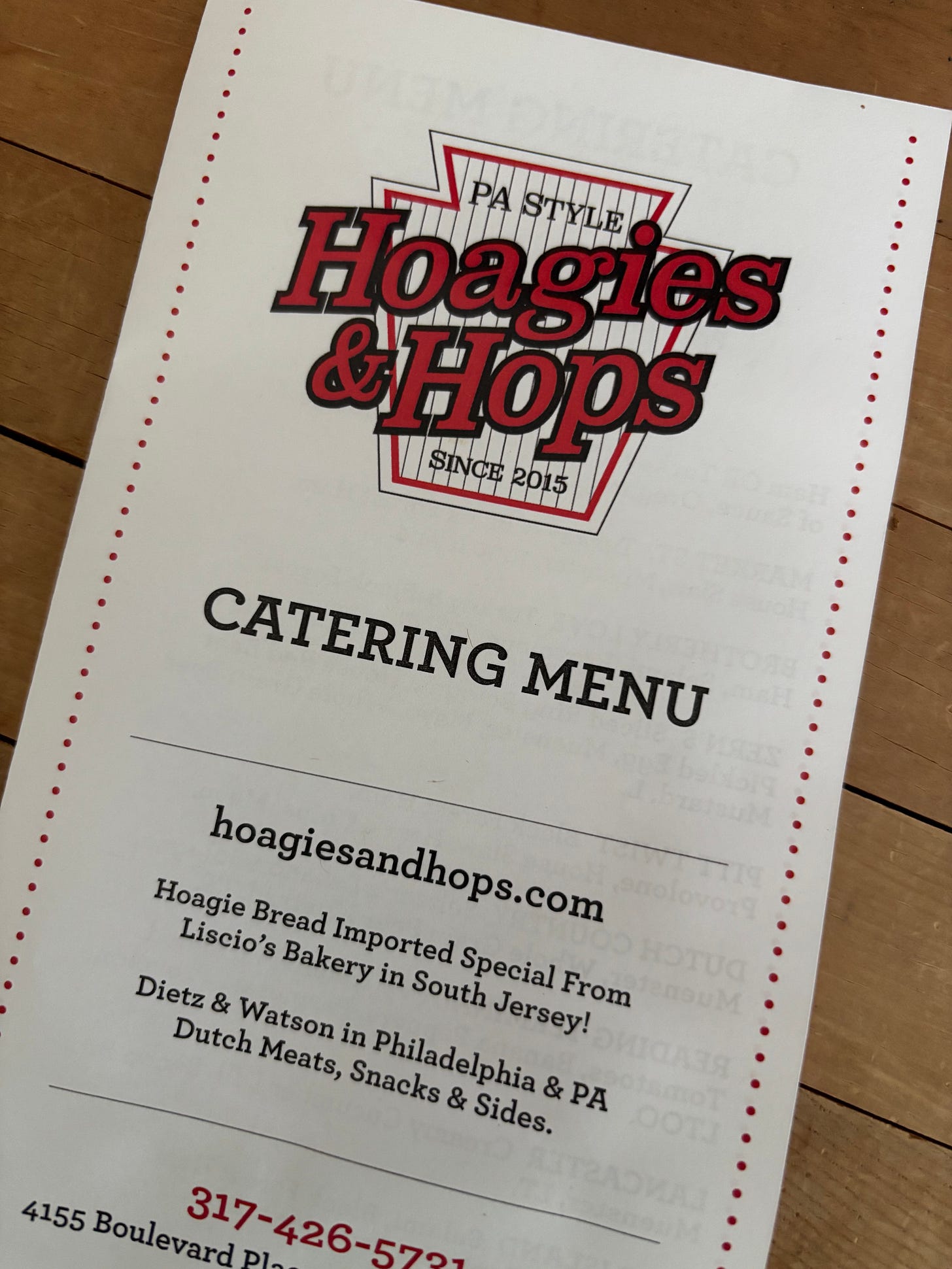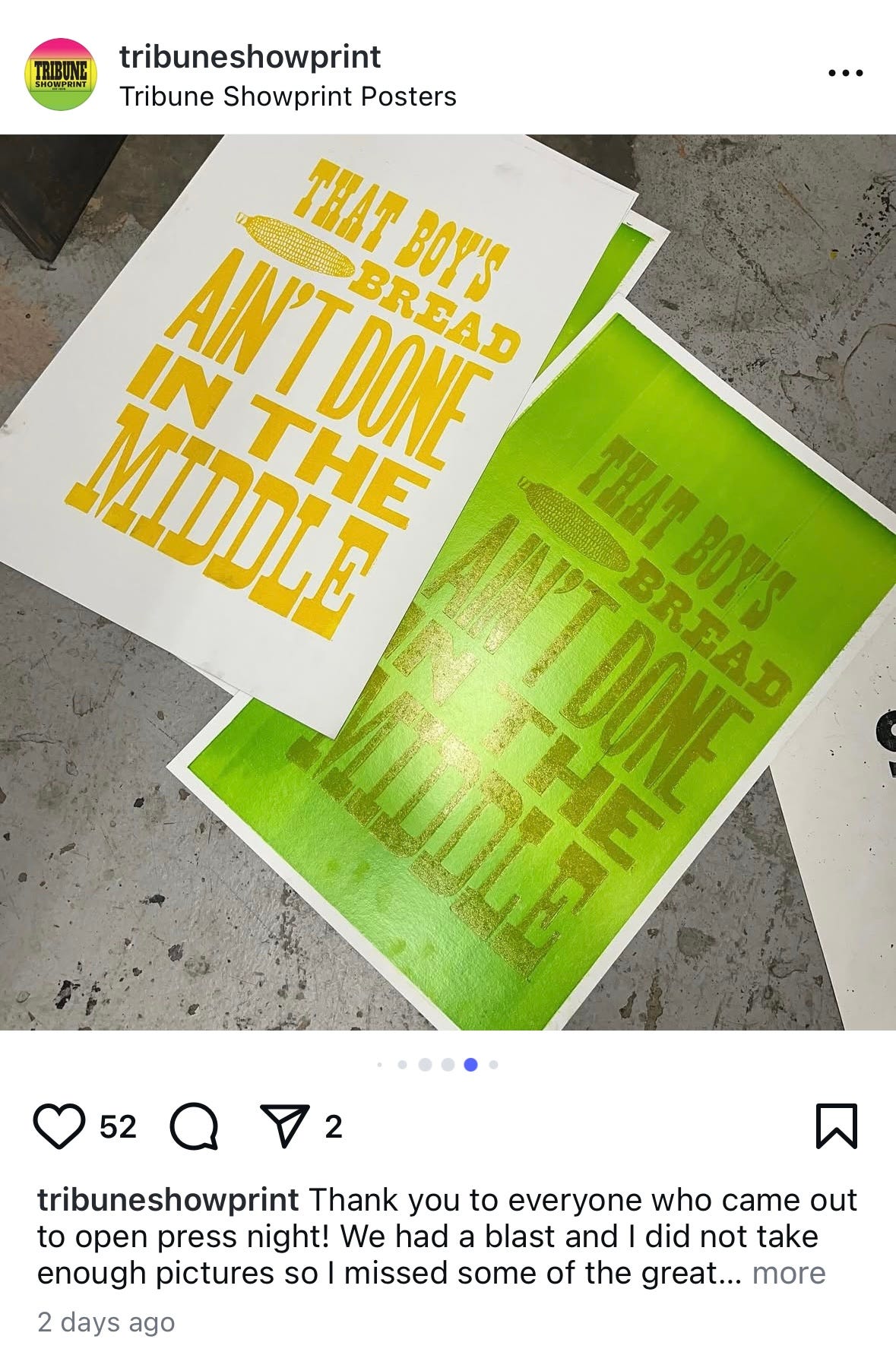Scholar.
Last week I had lunch in Indianapolis at a place called Hoagies & Hops. A dear friend and former student suggested the place as a meeting spot—a pure delight and incredibly thoughtful gesture. He knew I would love it. I did. My heart sang.
This little restaurant that I had never heard of before was a taste of home. All my senses were transported—smells of freshly chopped lettuce and onions, sounds of eastern Pennsylvania, sights of familiar brands, tastes of smoke, and the feel of a perfect hoagie roll. Growing up on the stuff, one of my favorite foods on the planet is Lebanon Seltzer’s Bologna. Fancy people, this stuff belongs on your choo choo train board. I have never seen it here in Indiana—until this week. Having a slice was heaven.
A fair bit of homework resulted from this lunch connect. I have been thinking about a more complete union between the photovoice literature and the policy literature. What kinds of policy theories can we couple with photovoice to enable folks to more effectively make change? This was the impetus for the lunch. My lunch date has a lot of expertise. I needed a reading list. I came away with an important moment of human connection, a full belly, a reading list, and a validated idea.
When and where do projects end?
This question is tricky. And it is one I think about a lot in the context of photovoice. Sometimes projects have clear ends. They money ran out. The exhibition happened. Everybody said goodbye. Sometimes projects just fade. Motivation wobbles. People leave. The momentum dwindles. And some projects keep on bubbling. New iterations, motivations, and opportunities keep the wheels turning.
Photovoice has three aims: build critical consciousness within participants, make space for participants to create images/narratives about their lives on their own terms, and reach policy makers. Hitting these three aims might mean the project is complete. Yet, how do we know whether the aims have been met? Furthermore, is reaching policy makers a good enough aim? What about making actual change? And what does that even mean?
The second aim is perhaps the easiest to wrap one’s mind around. It is the most concrete. Were images and narrations of those images made? And are the participants satisfied with the process and its results? Easy enough.
The first aim is probably the most tricky. I could write books on this topic, but I will leave it at this. The trained eye knows it when it sees it. After being an educator for nearly 25 years, I know it when I see it. The light bulb moments are why we do what we do. Few things are more beautiful.
The third aim seems simple enough on the surface, but reaching a policy maker does not translate into any kind of meaningful change. The first two aims are largely at the individual level. That level is critical. And it is not enough. Expanding the reverberations of the project’s themes-findings-implications-recommendations requires change at the systems level. In other words, changing the conditions in which we live requires looking upstream for the policies that created those conditions. The systems is perfectly designed for results it gets. Then, we need to tinker around with those policies. Remove them. Create them. Modify them. Adjust interpretations of them. And so on.
Examples of this are everywhere right now. And most of it, broadly, is really, really bad—at least in the context of the United States. The mechanisms through which policy changes occur are being obliterated. Systems meant to distribute power are failing. It is hard to say how far down this autocratic road we are going to travel. That my brain feels like it is in a washing machine on most days—going from incredulous to its antonym in the span of a moment all day long—tells me the road is long and that there is a lot of momentum.
Okay. Back to the point. People are hungry for hope. Starving, actually.
And reaching a policy maker is not good enough. We just cannot assume someone who pulls policy levers and interacts with a photovoice exhibition (broadly conceived) is going to go off and change stuff. We need strategies, tools, and tactics. That is the pathway to hope. Action. A plan. An action plan.
So, what of this homework? I aim to read, reflect, and create materials in service of bridging the gap between the photovoice exhibition and the policy action suggested by that exhibition. Here are some of the concepts I will be engaging over the next few weeks:
Interest groups and lobbying
Inside and outside strategies
Political institutions and processes
Policy process theory
Isomorphism
To build this bridge, I need to read broadly first, then deeply, while creating notes and excavating memories for reflection and making (written) connections between the theoretical and the practical. From there, I need interpret through more writing, modeling, and list-making. Converting these interpretations into an action menu is next. From there, actions will eventually be taken and assessed. What, if anything, has changed? And if so, are the conditions within which the participants live a bit freer? Bridges are vital.
First things first, however. The list.
This is me trying to cultivate hope through some actions I can take within a sphere I have influence. Because, dear reader, I am starving too.
Sundries.
Teaching is creating learning conditions. Your teacher cannot learn for you. You have to do that. The best teachers are those who create the most ideal contexts for learning. And creating those conditions is way more complex than one might think. There is a lot to it.
If you want to see what I mean, visit a well-resourced school’s Kindergarten classroom, check out a top-ranked children’s museum, or browse the syllabus of an award-winning professor.
Magical things can happen when you create a learning context, invite others to join you, and then see what happens. One of my favorite parts of being a teacher is simply seeing what happens. More often then not, students will pleasantly surprise you by surpassing most if not all your expectations.
The letterpress print shop where I have been spending time this summer is a tremendous learning context. Then again, so is everything and everywhere if you look at it in the right light.
This past Thursday was host to the monthly Open Press Night, which means the shop opens its doors to members of the community who want to come by, hang out, and make stuff. And make stuff they do. Very, very cool stuff.
I missed June’s Open Press Night but participated in May. And in May, I felt like a community member/outside/learner. After cooking up some ideas, I came ready to print. And print I did. I loved it. This time, however, I felt like a shop member/insider/teacher. This time felt different. Time will do that. It seemed like I should be part of creating the context for the event—not just enter into and be in it, not just doing the things the context facilitated.
So, I did what I do. As a teacher. I made food to share. Pumpkin muffins. I got there early to help set up. I put away type, cleaned up. Talked with the owners about how many people might show up, considering the heat. And then I helped the people inside the space there to learn and create.
What a shift. Before the night really got underway, the owner and I were talking about now much she loves these nights because she is reminded of the magic of the printing processes and all the creative things that people come up with. These are things she does not often get to think about, things she forgets. In her day to day, she is executing the wishes of others by meeting the customers’ needs. She is being artful, but she is not making art.
Open Press Night is for making art. And learning precedes the art making. And the owner has created the ideal learning context: a big space with lots of equipment, walls covered with ideas, archetypes, and inspiration; food and drinks; plenty of supplies on hand; welcoming teacher-people with warmth, smiles, information, and skilled guidance on how to bring ideas to fruition.
Years ago, Kathleen Plinske shared the ethos of her college with students in one of my classes, stating that there they believe anyone can learn anything under the right circumstances. The right circumstances are a well-designed learning context. The shop creates such a context one time per month.
And so much magic happens as a result.




Very, very, very interested in your policy-action-thinking. Are you familiar with Cathy Fleischer’s work on teacher research/advocacy?